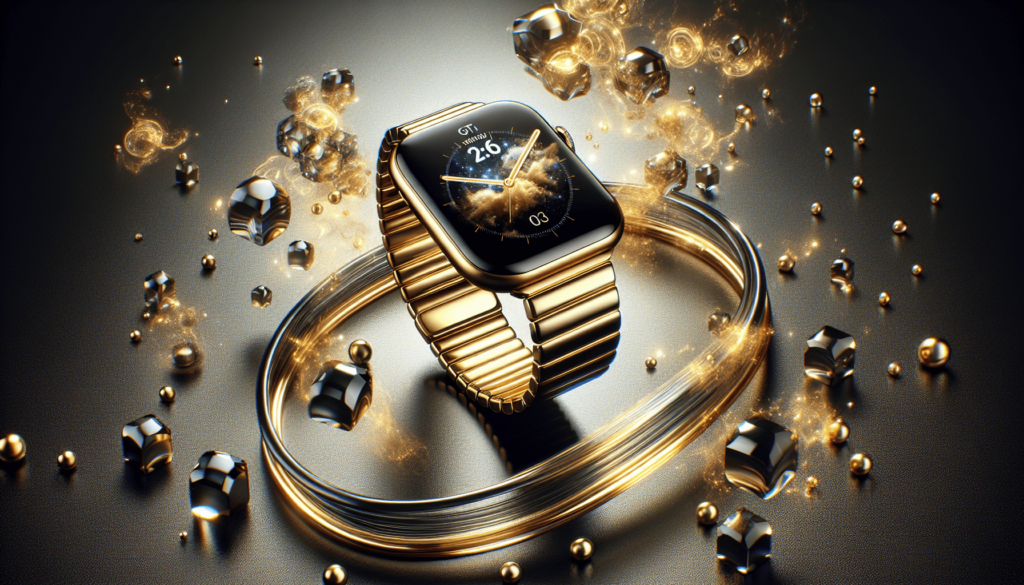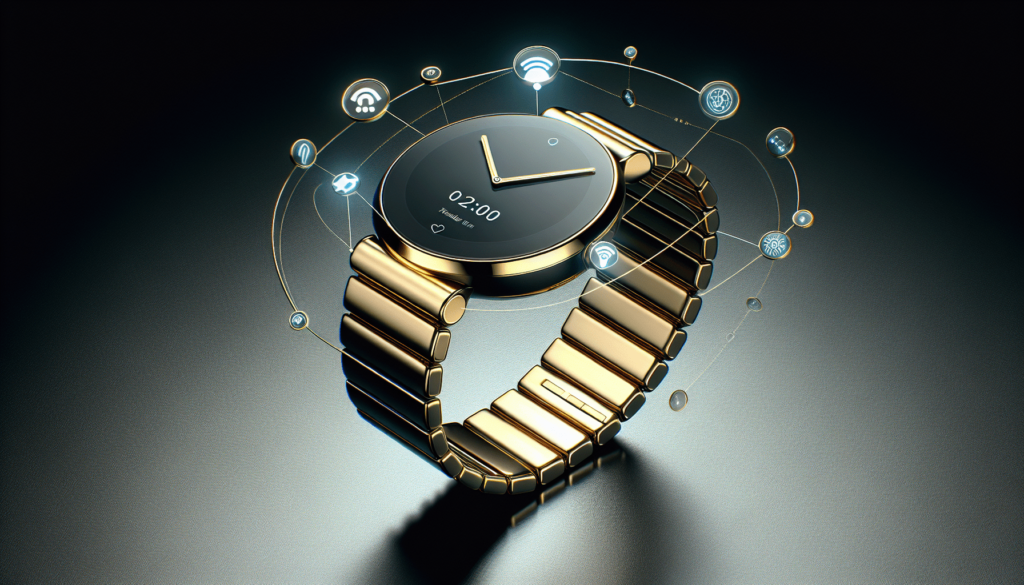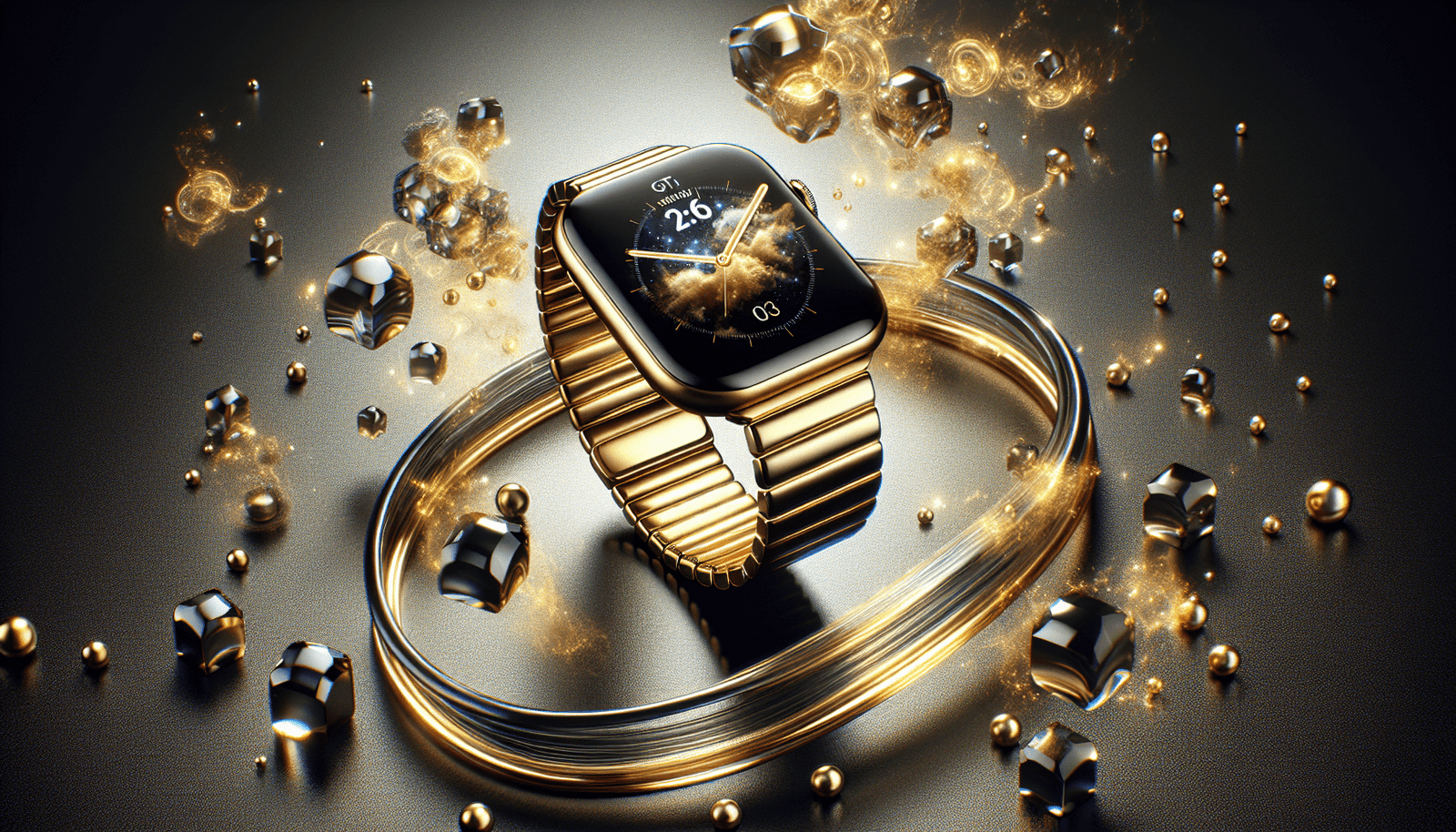Welcome to the fascinating world of the integration of gold in IoT (Internet of Things)! In this article, you’ll learn about how gold is being used in various IoT devices and applications, the benefits it brings to the technology industry, and why this precious metal is playing a crucial role in shaping the future of interconnected devices. Get ready to explore the innovative ways gold is enhancing the functionality and durability of IoT technologies. Exciting discoveries await you! Have you ever wondered how gold plays a role in the Internet of Things (IoT)? In this article, we will explore the integration of gold in IoT devices and how this precious metal is essential for the functionality and efficiency of smart technologies.
The Significance of Gold in IoT Devices
Gold is not just a shiny metal used for jewelry; it also has unique properties that make it a valuable component in electronic devices, including those within the Internet of Things. Its conductivity, resistance to corrosion, malleability, and ductility make it ideal for use in various components of IoT devices. So, whenever you see a smart device, know that the presence of gold is crucial for its operation.
Conductivity in IoT Devices
Gold is an excellent conductor of electricity, which means it allows for the efficient flow of electrical currents throughout the device. In IoT devices, where data transfer and communication are crucial, the conductivity of gold ensures that signals are transmitted accurately and quickly. So, the next time you connect to a smart home device or wearable technology, remember that gold is behind the scenes, ensuring seamless communication.
Corrosion Resistance in IoT Devices
One of the challenges electronic devices face is corrosion, especially when exposed to moisture or harsh environmental conditions. Gold is highly resistant to corrosion, making it an ideal material for components in IoT devices. This resistance ensures the longevity and durability of the devices, even in challenging environments. So, whether your IoT device is indoors or outdoors, the inclusion of gold means it can withstand the elements.
Malleability and Ductility in IoT Devices
Gold is not only an excellent conductor and resistant to corrosion, but it is also highly malleable and ductile. This means that it can be shaped and formed into intricate designs and thin layers for various components in IoT devices. Its flexibility allows for the creation of complex circuitry and components, ultimately optimizing the performance and efficiency of the devices. So, the next time you marvel at the sleek design of a smart device, remember that gold’s malleability and ductility play a part in its aesthetics and functionality.
The Role of Gold in Circuit Boards
Circuit boards are the backbone of electronic devices, including IoT technologies, as they provide the platform for electrical components to communicate and function together. Gold plays a crucial role in circuit boards, particularly in connectors and contact points, to ensure reliable connections and data transfer.
Connectors in IoT Devices
Connectors in circuit boards are essential as they establish the connection between different components, allowing for the flow of electricity and signals. Gold is often used in connectors due to its conductivity and resistance to corrosion. The use of gold ensures stable connections that are not affected by environmental factors, ensuring consistent performance over time. So, when you plug in your IoT device, know that gold connectors are working behind the scenes to keep you connected.
Contact Points in IoT Devices
Contact points are where electrical components make contact with the circuit board to transmit signals and data. Gold-plated contact points are common in IoT devices due to gold’s conductivity and resistance to wear. These contact points ensure efficient data transfer and minimize signal loss, ultimately improving the overall performance of the device. So, the next time you send a command to your smart device, remember that gold contact points are facilitating the communication process.

Gold in Sensors and Antennas
Sensors and antennas are integral components of IoT devices, allowing for the detection of environmental changes, data collection, and wireless communication. Gold is often used in sensors and antennas due to its unique properties that enhance their performance and accuracy.
Sensors in IoT Devices
Sensors in IoT devices play a crucial role in detecting and measuring various parameters, such as temperature, humidity, motion, and light. Gold is used in sensors due to its stability, sensitivity, and reliability in capturing data accurately. These sensors enable smart devices to respond to changes in their environment, providing valuable information for automation and control. So, the next time your smart thermostat adjusts the temperature or your wearable device tracks your steps, remember that gold sensors are capturing the data behind the scenes.
Antennas in IoT Devices
Antennas in IoT devices are essential for wireless communication, enabling devices to connect to networks and transmit data. Gold is often used in antennas due to its conductivity, which enhances signal strength and range. Gold-plated antennas in IoT devices ensure reliable and uninterrupted communication, whether it’s sending a message to another device or accessing the internet. So, when you stream music on your smart speaker or control your smart lights remotely, know that gold antennas are maximizing the connectivity of your IoT devices.
The Environmental Impact of Gold in IoT
While gold plays a significant role in the functionality and performance of IoT devices, it is essential to consider the environmental impact of using this precious metal in electronic components. The mining and extraction of gold can have environmental consequences, including deforestation, pollution, and habitat destruction. However, there are efforts to promote responsible sourcing and recycling of gold to minimize its environmental footprint.
Responsible Sourcing of Gold
Responsible sourcing of gold involves ensuring that the metal is extracted in a way that minimizes negative impacts on the environment and local communities. Companies that prioritize responsible sourcing of gold adhere to strict environmental and social standards, such as avoiding the use of mercury in mining and supporting fair labor practices. By choosing products made with responsibly sourced gold, consumers can contribute to sustainable mining practices and protect the environment.
Recycling of Gold in Electronic Waste
Electronic waste, or e-waste, is a growing concern due to the high volume of discarded electronic devices that end up in landfills. However, these devices contain valuable materials, including gold, that can be recycled and reused in the production of new electronic components. Recycling gold from e-waste reduces the need for further mining and extraction, conserving natural resources and minimizing environmental impact. By recycling old devices, you can contribute to the circular economy and reduce the demand for newly mined gold.

The Future of Gold in IoT
As the Internet of Things continues to expand and evolve, the role of gold in smart technologies is expected to grow as well. Advances in nanotechnology and material science are likely to lead to new applications of gold in IoT devices, further enhancing their performance and capabilities. Whether it’s improving connectivity, increasing energy efficiency, or enhancing data security, gold will remain a valuable component in the development of innovative IoT solutions.
Nanotechnology in Gold Electronics
Nanotechnology involves manipulating materials at the nanoscale to create new properties and functionalities. Gold nanoparticles are already being used in various applications, from sensors to drug delivery systems, due to their unique properties at the nanoscale. In IoT devices, nanotechnology can enhance the performance of gold components, making them more efficient, sensitive, and responsive to changes in the environment. The integration of nanotechnology in gold electronics will drive the development of smaller, faster, and more powerful IoT devices in the future.
Energy-Efficient Gold Components
Efficiency and sustainability are key considerations in the design of IoT devices, as consumers and manufacturers prioritize energy conservation and environmental responsibility. Gold’s conductivity and reliability make it an ideal material for creating energy-efficient components that minimize power consumption and maximize performance. By optimizing the use of gold in circuitry, sensors, and antennas, IoT devices can operate more efficiently, prolong battery life, and reduce their environmental impact. In the future, we can expect to see even more energy-efficient gold components in smart technologies.
Enhanced Security with Gold Encryption
Data security is a critical concern in IoT devices, as they collect, transmit, and store sensitive information about users and their environments. Gold encryption techniques can strengthen the security of IoT communications, ensuring that data is protected from unauthorized access and cyber threats. By incorporating gold-based encryption solutions, IoT devices can safeguard user privacy, prevent data breaches, and enhance overall cybersecurity. As the IoT landscape expands, the integration of gold encryption will be essential for building trust and confidence in connected devices.
In conclusion, gold plays a vital role in the integration of IoT devices, providing conductivity, corrosion resistance, malleability, and ductility for efficient and reliable performance. From circuit boards to sensors and antennas, gold components enhance the functionality and connectivity of smart technologies, ensuring seamless communication and data transfer. While the environmental impact of gold mining is a concern, responsible sourcing and recycling practices can mitigate its effects and promote sustainability. Looking ahead, the future of gold in IoT is promising, with nanotechnology, energy-efficient components, and enhanced security measures driving innovation and advancement in smart technologies. So, the next time you interact with your IoT devices, remember that gold is working behind the scenes to make it all possible.

